InZoi’s early access release isn’t a particularly good fit for the Steam Deck, primarily because it isn’t a particularly good game. Even before you can dig into its sterile person-pushing, though, trying to run InZoi on Valve’s hanhdheld involves involuntarily headbutting the kinds of compatibility problems and weird workarounds that haven’t been common to the Deck since its early days in 2022.
This is frustrating in itself, and doubly so knowing that despite all those years of maturing, the Steam Deck doesn’t really have a heavyweight life sim that slots in seamlessly to the handheld format. The Sims series, InZoi’s clear inspiration and main rival, can be monkey-wrenched into playability, but even the most recent Sims 4 needs a community-made control modification to function – and that’s more about replicating mouse controls on the trackpads than truly optimising for controller-style inputs. InZoi wants to look like the very model of a modern life simulator, but its own lack of portable rapport is, at best, a missed opportunity to plug this gap.
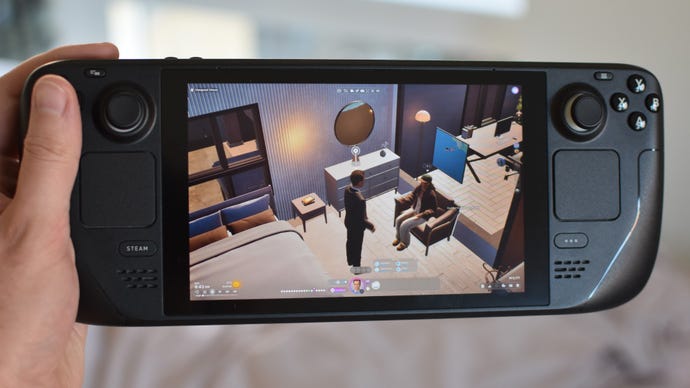
At worst, it just doesn’t work, and for reasons that even the most troublesome Steam Deck games got over ages ago. First, launching InZoi as it comes will treat you to nothing but a black screen, as the pre-rendered introductory video that plays on every startup breaks instantly – an unwelcome throwback to the Deck’s teething problems with missing or incompatible AV codecs. I found that one classic fix still worked, namely installing the latest version of Proton GE and forcing InZoi to launch through it, though any smug face I may have pulled was quickly punched in upon reaching the main menu screen. A screen that was inexplicably defaulting to some CRT-lookin’ aspect ratio, with absolutely nothing on it – settings menu included – being clickable.
The workaround for this menu borkage is so tedious and unintuitive that it can only be effectively explained via a step-by-step guide. WhichM at leastM has the side benefit of keeping this article helpful for people who ignore the parts where I say not to bother.
Step 1: Install and launch InZoi at least once. Then, hold down the Steam Deck’s power button and enter Desktop Mode through the list of power options. It’ll help if you have a docking station with a mouse and keyboard connected at this point, though it isn’t essential.
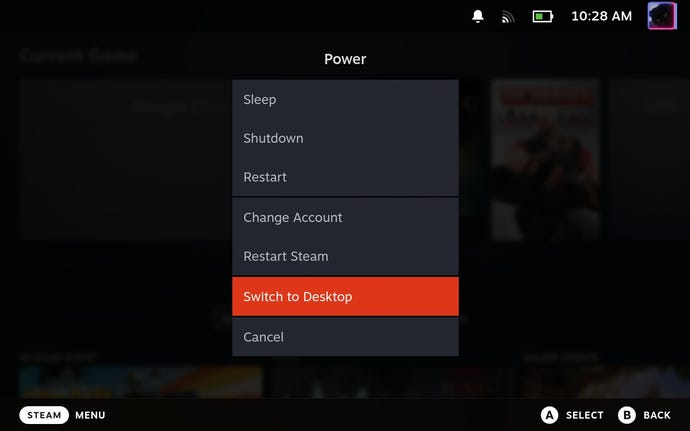
Step 2: Once you’re in Desktop Mode, open the Dolphin file manager and navigate to home > .steam > steam > steamapps > compatdata > 2456740 > pfx > drive-c > users > steamuser > AppData > Local > BlueClient > Saved > Config > Windows. If any of these don’t appear, click the hamburger icon (three short horizontal lines) and check “Show Hidden Files”.
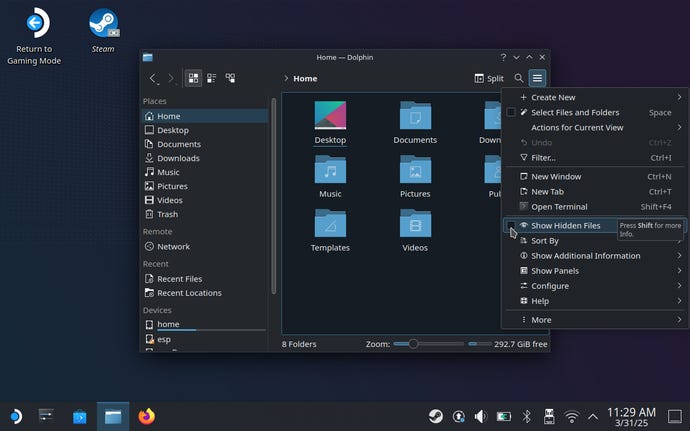
Step 3: In the Windows folder, there should be a file named GameUserSettings.ini. Double-click this to open it.
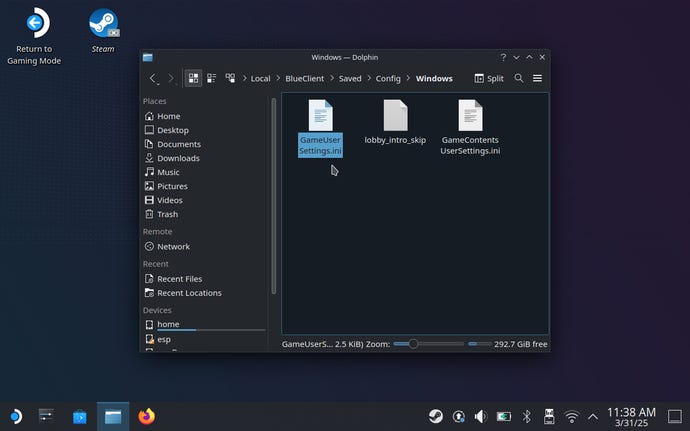
Step 4: Locate the “FullscreenMode” setting, which will be set to 0. Use your keyboard (or the Deck’s onscreen keeb, accessible by pressing the the Steam button + X) to replace the 0 with a 1, then click “Save” near the top of the window.
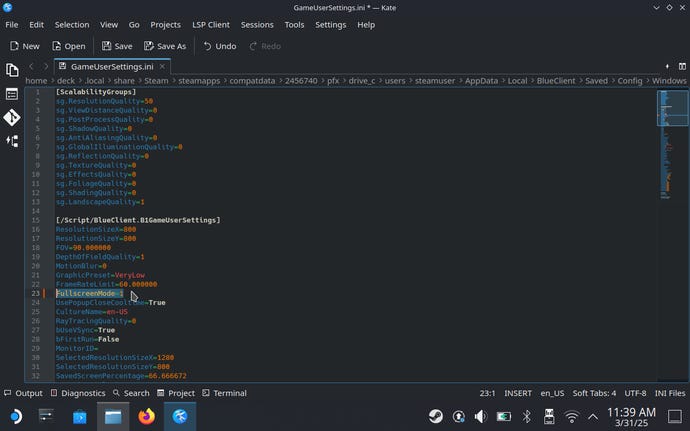
With this .ini tweak saved, and Proton GE all set up (I used version 9-26), InZoi will finally start running on your Steam Deck. Sadly, you’ll soon find that it’s only playable with some rather fiddly (and finnicky) trackpad controls, which have more in common with Desktop Mode navigation than gamepad-ready game controls. That means manually seeking the UI’s titchy buttons with a thumb-guided trackpad cursor, while the D-pad is wasted on providing the exact same Zoi movement function as the left stick. Scrolling through action menus also ignores the obviously superior Up/Down buttons in favour of having you hold down L2 and flicking the right trackpad, which feels a bit like the two sides of your brain are knifefighting under a bridge.
Other quirks aren’t quite so bad – having to manually open the onscreen keyboard for text entry, for example – but the constant friction that these controls present is enough to make you wonder why you delved so deep into those config files to begin with. InZoi also seems disinterested in the Steam features that most keenly benefit Deck users. There’s no cloud save support, so you can’t take your Zoi communities from your desktop and keep building them up on your handheld, and launching in offline mode just returns an impassable (though vague) error message about failing to “authenticate” Steam.
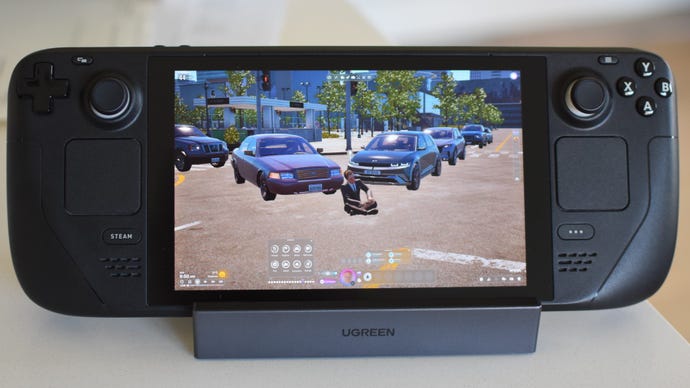
As always with early access games, “s’not finished” caveats apply, so it’s conceivable that technical fixes and new control schemes could improve InZoi across the coming months. Maybe Valve themselves can do something about that opening cutscene issue too, seeing as how it’s evidently a Proton-related problem. And most encouragingly, general performance is already decent: I had to manually disable ray tracing, but the default-applied Very Low quality preset runs on my LCD Steam Deck at around 40fps.
Still, that glimmer of potential is more a signal to wait than it is a reason to power through InZoi’s current collection of handheld irritations. Deck-wielding life sim fans are better off sticking to The Sims 4 and praying to god – which I suppose, in this context, is themselves – for better attempts in the future.







